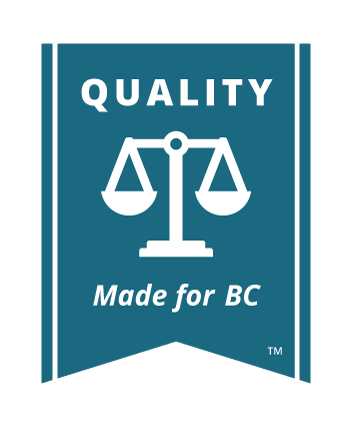Evidence Basics
Evidence is what you present to the court to prove your claim or your defense.The rules of evidence are fairly complicated.
Evidence takes different forms.
-
Oral Evidence: This is when someone “takes the stand” in Court and describes what they saw or heard under oath or solemn affirmation
-
Affidavit Evidence: This is written evidence made under an oath or solemn affirmation
-
Documentary Evidence: This can include photographs, drawings, documents, records, videos, sound recordings, etc.
-
Expert Evidence: This is when an expert provides an opinion to help the Court understand the evidence before it
A judge can consider your evidence only if it is admissible, which means that it is relevant to a material fact in the case and not excluded by any rules.
Relevance
Evidence is relevant if it is related to the facts of the case in some logical way. To decide whether evidence is relevant, ask yourself whether the evidence helps you prove the facts of your case.
To give an example, the fact that the roads were icy on the day of the car accident is probably relevant to your case. The fact that the driver of the other car was wearing a blue sweater probably is not relevant.
Material Facts
A material fact is one that is important or essential to the case. What is material is often determined by the pleadings because the pleadings set out what is being disputed. For example, in a car accident case, the fact that the other driver was intoxicated is a material fact. The fact that the other driver served time in jail ten years ago is probably not material to the dispute.
Exclude Evidence
The judge may not allow evidence into court if:
-
The evidence is privileged – that is, if you have the right to keep that document confidential
-
It would be unfair to let the evidence in (for example, if the other party wanted to rely on a document that they had not disclosed to you)
Weight of the Evidence
The judge will decide the weight (importance) of a piece of evidence in light of all the evidence that has been admitted by the judge into court. Just because evidence has been admitted into court, it does not mean that it will be given the same weight as other evidence or any weight at all.
For example, if a witness to a fight in a bar had been drinking all day and gives evidence that contradicts the evidence of a police officer that was called to stop the fight, the judge will probably give more weight to the police officer’s evidence. That is, when deciding what they believe, they will prefer the officer’s evidence.
Similarly, the judge will decide if the witness’s evidence is credible (i.e., believable). If it is not credible, the judge will not attach much, or any, importance to the evidence. For example, the judge may conclude that the evidence of the wife to someone involved in the fight was biased.
Burden of Proof
The person who is asking the court for a remedy has the burden (responsibility or obligation) of proving the facts that support their case. Generally, if you want the Court to do something, you have to prove the facts that support that request.
You do not necessarily have to lead evidence to defend a lawsuit. Sometimes you can simply say that the plaintiff has not proven their case. However, usually, defendants do lead evidence to respond to the plaintiff’s evidence.
Standard of Proof
In a civil case, the person submitting the evidence (providing the evidence to the court) must prove that it is true “on a balance of probabilities.” This means that it is “more likely than not.”
Is Proof Necessary?
It is not always necessary to prove every fact that you want to submit as evidence in your case. Some facts are so commonly known that they do not need to be proved, and in a few (rare) situations, facts are accepted into evidence on the basis of legal principles, as in judicial notice and admissions.
Judicial Notice
A judge can acknowledge that a fact has been proven without you having to prove it if the community commonly knows the fact. This is called “judicial notice”. For example, it would not be necessary to prove that in the year 2004, Christmas was on December 25th.
However, what judges will take judicial notice of is not large. Some things that you may think are quite “common sense” will still require proof.
A judge must also take “judicial notice” of provincial and federal statutes, as well as provincial Regulations. You would not need to prove, for example, that the Motor Vehicle Act of BC was a validly enacted law of the province.
The Rules of Evidence
Rules of evidence establish what evidence can be presented to the Court in which cases.
The rules also control the procedure for introducing the evidence to the court. For example, it is a rule that a document cannot be introduced into evidence if it has not been included on a list of documents.
The rules of evidence help the trial run smoothly and efficiently. The rules also ensure that the trial procedure is fair to both parties.
The rules of evidence come from three sources:
-
Provincial legislation (statutes, including notably the Evidence Act) and
-
Case law (much of which is searchable at CanLII)
The Supreme Court Civil Rules (usually called the “Rules of Court” or the Rules) are the main source for the rules of evidence that apply in proceedings in the Supreme Court of BC.
Statutes (or legislation) are laws made by the provincial and federal governments. For example, the Evidence Act sets out the principles of evidence that apply to civil and family cases being heard in the BC Supreme Court.
Case law is the decisions made by other judges. The judge in your case will apply the laws of evidence, in part, according to earlier decisions. Applying the law from previous court decisions is called common law.
For more information on how to research the law, which applies as well to researching the law of evidence, see Legal Research.
Admissions
A party can admit that certain facts or issues are not in dispute. Also, you and the other party can tell the court that you agree on certain facts in the case. This is called an agreed set of facts. It will speed up the trial process because those facts do not need to be proved in court.
For example, in a motor vehicle accident case, the defendant will often admit liability (that they were responsible for the accident) but will dispute the amount of personal injury damages the plaintiff is claiming (called quantum of damages).
If one party admits a fact in this formal way, it is binding on that party. Withdrawing an admission requires permission from the Court. That means that once the defendant, for example, admits liability for the accident, they cannot argue against that later without getting permission from the Court to withdraw an admission.
Formal admissions can be made:
-
In the pleadings
-
In a notice to admit (see Rule 7-7(1)and Form 26, as well as Discovery) or
-
In an agreed statement of facts







 JusticeEducation.ca
JusticeEducation.ca JusticeEd
JusticeEd /JusticeEducation
/JusticeEducation